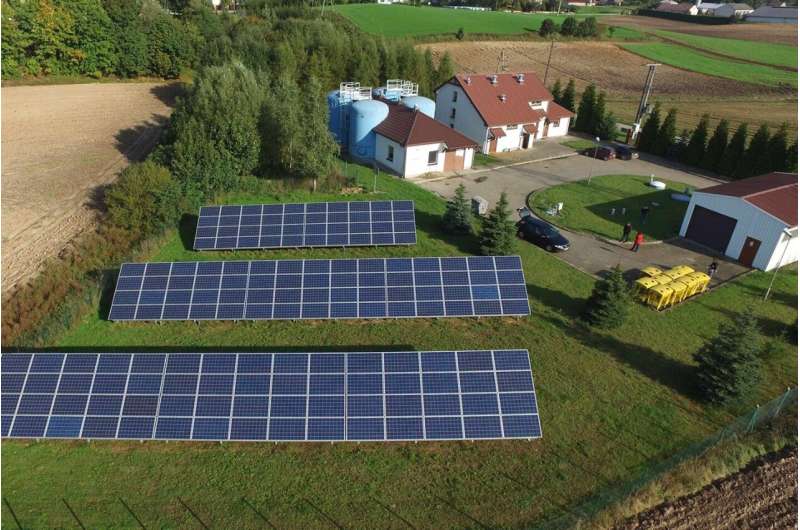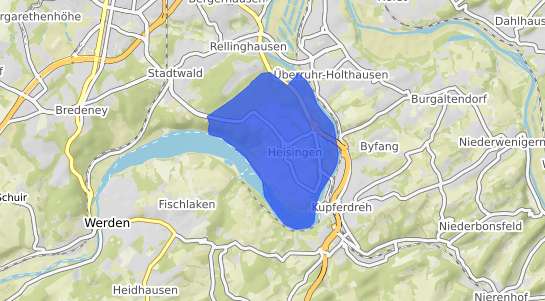Escape To The Country: Living Sustainably In Rural Areas

Table of Contents
Finding the Right Rural Property for Sustainable Living
Choosing the right property is crucial for successful sustainable rural living. Careful consideration of several factors will lay the groundwork for a harmonious and eco-friendly existence.
Location, Location, Location:
The ideal location balances seclusion with accessibility. Consider these key aspects when searching for your rural haven:
- Proximity to Services: While seeking peace and quiet, ensure reasonable access to essential services like healthcare, internet connectivity, and shopping. Consider the distance to schools and work opportunities if applicable.
- Land Suitability: Assess the land's characteristics for sustainable practices. Ample sunlight is vital for solar energy, good soil quality is essential for gardening and farming, and reliable water access (either from a well or a natural source) is paramount. Conduct a thorough soil test and water quality analysis.
- Zoning Regulations and Building Codes: Research local regulations before purchasing. Understanding building codes concerning sustainable construction, permitted building materials, and potential restrictions on renewable energy installations is crucial. This avoids costly setbacks later.
- Off-grid Potential: If off-grid living is a goal (a common aspiration for those seeking sustainable rural living), carefully analyze the land's potential for solar, wind, or other renewable energy sources. Consider the feasibility of well water and septic systems.
Eco-Friendly Building and Renovation:
Constructing or renovating your rural home with sustainability in mind is key to minimizing your environmental footprint. Explore these options:
- Sustainable Building Materials: Choose eco-friendly materials like reclaimed wood, bamboo, straw bales, or locally sourced timber. These materials often have a lower carbon footprint than conventionally produced materials.
- Energy Efficiency: Prioritize energy efficiency through proper insulation, passive solar design (maximizing sunlight in winter and minimizing it in summer), and green roofing. These features significantly reduce energy consumption.
- Renewable Energy Sources: Invest in renewable energy sources like solar panels, wind turbines, or geothermal energy. Assess the feasibility and cost-effectiveness of each option based on your location and energy needs. Consider battery storage for off-grid situations.
Sustainable Practices for Rural Living
Once you've found your ideal property, implementing sustainable practices is vital for a truly eco-friendly lifestyle.
Water Conservation:
Water is a precious resource, especially in rural areas. Implement these water conservation strategies:
- Rainwater Harvesting: Collect rainwater for irrigation and non-potable water needs like toilet flushing. This significantly reduces reliance on municipal water supplies.
- Low-Flow Fixtures: Install low-flow showerheads, faucets, and toilets to minimize water usage without compromising comfort.
- Xeriscaping: Adopt water-wise gardening techniques like xeriscaping, which utilizes drought-resistant plants and minimizes water consumption in landscaping. This reduces water usage and maintenance.
- Greywater Recycling: Explore the possibility of greywater recycling, which reuses wastewater from showers and sinks for irrigation. This requires careful planning and appropriate filtration systems.
Waste Reduction and Management:
Minimizing waste is essential for sustainable rural living. Consider these options:
- Composting: Compost organic waste from your kitchen and garden to create nutrient-rich soil amendment, reducing landfill waste and enhancing your garden's fertility.
- Reduce, Reuse, Recycle: Adopt the three Rs philosophy in all aspects of your daily life. Repair items instead of replacing them, reuse containers and materials creatively, and recycle responsibly.
- Anaerobic Digestion/Vermicomposting: For larger properties or those generating significant organic waste, consider anaerobic digestion or vermicomposting for efficient waste processing and biogas generation.
Sustainable Food Production:
Producing your own food enhances both your self-sufficiency and sustainability.
- Organic Gardening: Grow your own fruits, vegetables, and herbs using organic gardening methods, avoiding harmful pesticides and herbicides.
- Livestock: Raise chickens or other livestock for meat and eggs, prioritizing humane and environmentally responsible practices. This reduces reliance on industrial food systems.
- Local Food Systems: Support local farmers' markets and Community Supported Agriculture (CSA) programs to access fresh, locally sourced food. This reduces transportation emissions and supports local economies. Consider permaculture principles for integrated food production.
Community and Social Aspects of Sustainable Rural Living
While sustainable rural living offers tranquility, it's essential to consider the community aspect.
Building a Sustainable Community:
Engage with your new community and contribute to its sustainability:
- Local Environmental Groups: Join local environmental groups and initiatives to participate in collective action and share knowledge.
- Community Involvement: Participate in community gardening projects, farmers' markets, or other local events.
- Supporting Local Businesses: Support local businesses and artisans to strengthen the local economy and foster a sense of community.
Addressing the Challenges:
Acknowledge and plan for potential challenges of rural living:
- Rural Isolation: Address the potential for isolation by proactively building relationships with neighbors and engaging in community activities. Reliable internet access is crucial for staying connected.
- Access to Services: Plan for reliable transportation and communication options, especially in areas with limited public transport.
- Community Support: Develop strong support networks within the community. Knowing your neighbours and building relationships can help mitigate challenges.
Conclusion
Embracing sustainable rural living offers a unique opportunity to reconnect with nature, live a more fulfilling life, and contribute to a healthier planet. By carefully considering factors such as property selection, sustainable practices, and community engagement, you can create a thriving and environmentally responsible lifestyle in the countryside. Start planning your escape today and discover the rewards of sustainable rural living – your own personal sanctuary awaits! Begin your search for your ideal eco-friendly rural property now!

Featured Posts
-
 The M62 Relief Road And Bury A Case Study In Unbuilt Infrastructure
May 24, 2025
The M62 Relief Road And Bury A Case Study In Unbuilt Infrastructure
May 24, 2025 -
 Escape To The Country Tips For A Smooth Transition To Rural Life
May 24, 2025
Escape To The Country Tips For A Smooth Transition To Rural Life
May 24, 2025 -
 Escape To The Country Top Destinations And Hidden Gems
May 24, 2025
Escape To The Country Top Destinations And Hidden Gems
May 24, 2025 -
 Macrons Policies Face Criticism From Former French Pm
May 24, 2025
Macrons Policies Face Criticism From Former French Pm
May 24, 2025 -
 Polizeimeldung Essen Waldbrand In Heisingen Am 07 04 2025
May 24, 2025
Polizeimeldung Essen Waldbrand In Heisingen Am 07 04 2025
May 24, 2025
Latest Posts
-
 The Demna Gvasalia Effect Reshaping Guccis Aesthetic
May 24, 2025
The Demna Gvasalia Effect Reshaping Guccis Aesthetic
May 24, 2025 -
 Trillery I Refleksiya Pochemu Lyudi Lyubyat Schekotat Nervy
May 24, 2025
Trillery I Refleksiya Pochemu Lyudi Lyubyat Schekotat Nervy
May 24, 2025 -
 Demna At Gucci Examining The Impact Of The New Creative Director
May 24, 2025
Demna At Gucci Examining The Impact Of The New Creative Director
May 24, 2025 -
 Demna Gvasalia Shaping The Future Of Guccis Brand Identity
May 24, 2025
Demna Gvasalia Shaping The Future Of Guccis Brand Identity
May 24, 2025 -
 O Chem Govorit Uspekh Nashego Pokoleniya Analiz I Prognozy
May 24, 2025
O Chem Govorit Uspekh Nashego Pokoleniya Analiz I Prognozy
May 24, 2025
